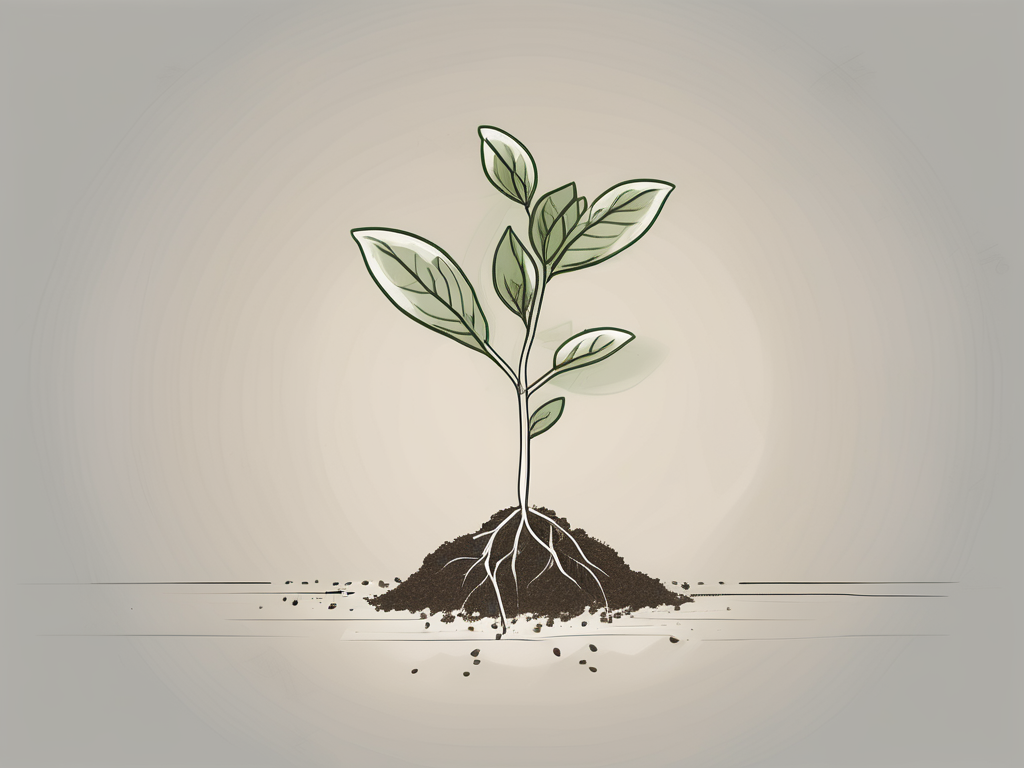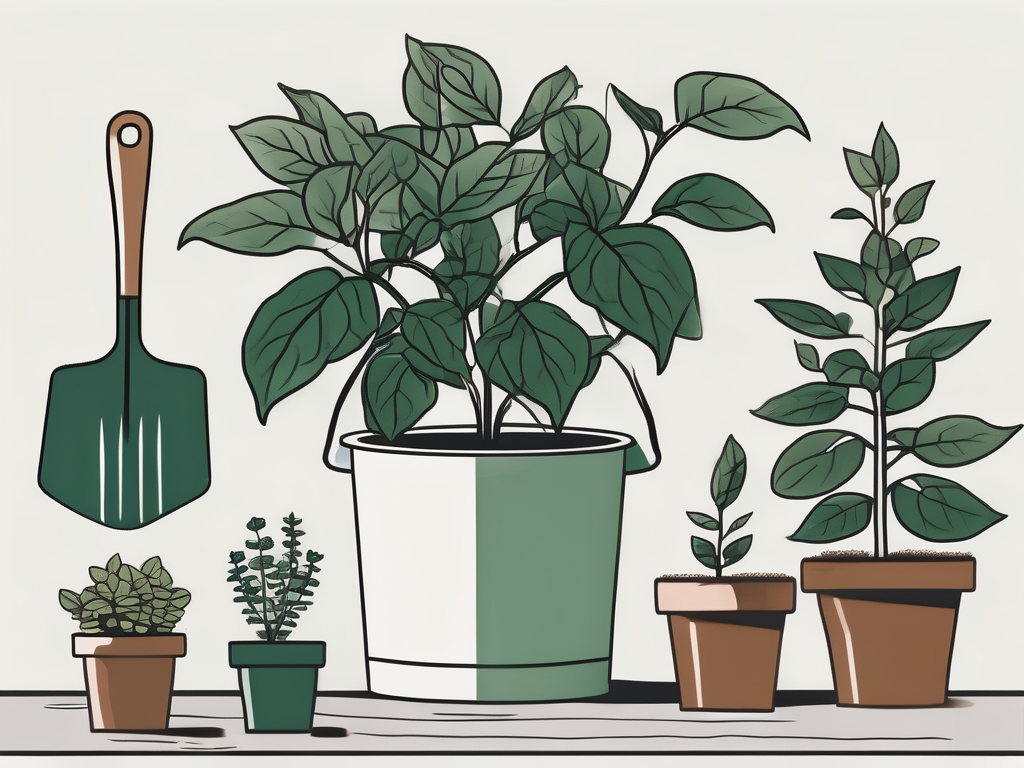
The Pink Panther plant, or Callisia repens ‘Pink Panther’, is a charming addition to any plant lover's collection, with its beautifully variegated pink and green leaves. It's not just a pretty face, though; this plant is also relatively easy to care for and propagate. If you're looking to expand your plant family without breaking the bank, learning how to propagate this plant can be a fun and rewarding project.
In this article, we'll walk you through the step-by-step process of propagating the Pink Panther plant. From gathering the right materials to nurturing your new cuttings, we'll cover everything you need to know. So, grab your gardening gloves, and let's get started!
Understanding Your Pink Panther Plant
Before you start snipping away, it's helpful to get to know your Pink Panther plant a bit better. This plant is a member of the Commelinaceae family, which includes other popular houseplants like Tradescantia and Zebrina. The Pink Panther is known for its trailing stems and small, fleshy leaves that boast a delightful mix of pink, purple, and green hues.
One of the great things about the Pink Panther is its versatility. It can be grown in hanging baskets, allowing its colorful foliage to cascade down, or as a ground cover in a mixed planter. It's also a fast grower, which means you'll have plenty of opportunities to practice your propagation skills.
In terms of care, the Pink Panther prefers bright, indirect light, although it can tolerate lower light conditions. Just keep in mind that the more light it receives, the more vibrant its colors will be. Water when the top inch of soil feels dry, and make sure to use a well-draining potting mix to prevent root rot. Now that you're acquainted with your plant, let's move on to the fun part: propagation!
Gathering Your Supplies
Before diving into propagation, make sure you have everything you need. Having the right tools and materials on hand will make the process smoother and more enjoyable. Here's a list of what you'll need:
- Pruning shears or scissors: A clean, sharp pair of scissors or pruning shears is essential for making precise cuts. Dull blades can crush the stems, making it harder for the plant to heal and root.
- Small pots or containers: You'll need these to plant your cuttings. Small pots or even recycled containers can work well; just make sure they have drainage holes.
- Potting mix: A well-draining potting mix is crucial for healthy root development. You can use a standard potting soil mixed with a bit of perlite or sand to improve drainage.
- Watering can or spray bottle: Keeping your cuttings hydrated is key, so have a watering can or spray bottle handy.
- Optional rooting hormone: While not strictly necessary, rooting hormone can help encourage faster root growth.
Once you've gathered your supplies, you're ready to start propagating!
Choosing the Right Time to Propagate
Timing can make a big difference when it comes to successful propagation. The best time to propagate your Pink Panther plant is during the growing season, which typically runs from spring to early summer. During this time, the plant is actively growing, and your cuttings will have the best chance of rooting quickly and establishing themselves as healthy new plants.
That said, you can propagate at other times of the year if needed, but keep in mind that growth may be slower. If you're propagating in the fall or winter, consider providing a little extra warmth and humidity to help your cuttings along. A sunny windowsill or a small grow light can be a great way to give your plants the boost they need.
Ultimately, the key is to choose a time when your plant is healthy and thriving. Avoid taking cuttings from a stressed or struggling plant, as this can lower the chances of successful propagation. Now that you've picked the perfect time, let's move on to taking those cuttings!
Taking Cuttings from Your Pink Panther
Now comes the exciting part: snipping off those cuttings! Don't worry, it's not as daunting as it sounds. Follow these steps to take healthy cuttings from your Pink Panther plant:
- Choose a healthy stem: Look for a stem that is healthy and vigorous, with plenty of leaves. Avoid any stems that appear damaged or diseased.
- Make the cut: Using your clean, sharp scissors or pruning shears, cut a 4-6 inch section from the stem. Make sure your cut is just below a leaf node, as this is where new roots will develop.
- Remove lower leaves: Pinch off the leaves from the lower half of the cutting. This helps the cutting focus its energy on developing roots rather than maintaining excess foliage.
- Optional rooting hormone: If you're using rooting hormone, dip the cut end of the stem into the powder or gel, then tap off any excess. While not necessary, it can give your cuttings a little extra boost.
With your cuttings ready to go, it's time to move on to the next step: planting them!
Planting Your Cuttings
With your cuttings prepped and ready, it's time to get them nestled into their new homes. Here's how to plant your Pink Panther cuttings:
- Prepare your pots: Fill your small pots or containers with the well-draining potting mix, leaving about an inch of space at the top.
- Make a hole: Use your finger or a pencil to poke a hole in the center of the potting mix. This will make it easier to insert your cutting without damaging the stem.
- Insert the cutting: Gently place the cut end of the stem into the hole, ensuring that at least one or two nodes are buried in the soil. Firmly press the soil around the base of the cutting to hold it in place.
- Water lightly: Give your newly planted cuttings a light watering or misting to help settle the soil, but be careful not to overwater. You want the soil to be moist but not soggy.
Once your cuttings are planted, find a warm, bright spot for them to live while they establish roots. A windowsill with indirect light is usually perfect. Keep an eye on them and water as needed to keep the soil slightly moist.
Caring for Your New Cuttings
While your cuttings are busy growing roots, they need a little extra TLC to ensure they thrive. Here are some tips for nurturing your Pink Panther cuttings:
Light: Place your cuttings in a spot with bright, indirect light. Too much direct sunlight can scorch the leaves, while too little light can slow down growth.
Humidity: Pink Panthers love a bit of humidity, so consider placing a clear plastic bag over the cuttings to create a mini greenhouse effect. Just be sure to remove it every few days to let in some fresh air.
Watering: Keep the soil consistently moist but not waterlogged. A spray bottle can be helpful for misting the cuttings without overwatering them.
Temperature: Aim to keep your cuttings in a warm environment, ideally between 65-75°F (18-24°C). Avoid placing them near cold drafts or heating vents, which can stress the plants.
With a bit of patience and care, you'll soon see new growth as your cuttings establish roots.
Transplanting Your Rooted Cuttings
After a few weeks, you should start to see roots developing on your cuttings. Once the roots are a couple of inches long, it's time to transplant them into their permanent pots. Here's how:
- Choose a suitable pot: Select a pot that's slightly larger than the container your cuttings have been growing in. Make sure it has drainage holes to prevent waterlogged soil.
- Add potting mix: Fill the pot with fresh, well-draining potting mix, leaving some space at the top.
- Transplant carefully: Gently remove the cutting from its current container, being careful not to damage the delicate roots. Place it into the new pot and fill in with soil, pressing gently around the base to secure it.
- Water thoroughly: Give the newly transplanted plant a good drink to help it settle into its new home.
With your cuttings successfully transplanted, continue to care for them as you would a mature Pink Panther plant, and watch them flourish!
Common Propagation Problems and Solutions
Even with the best care, sometimes things don't go as planned. Here are a few common issues that can arise during propagation and how to address them:
- Cuttings not rooting: If your cuttings aren't rooting, it might be due to insufficient light, temperature, or humidity. Try adjusting these factors to create a more favorable environment.
- Stem rot: Overwatering can lead to stem rot, which can be fatal for your cuttings. Make sure the potting mix is well-draining and avoid keeping the soil too wet.
- Leaves turning yellow: Yellowing leaves can indicate stress, often due to overwatering or not enough light. Assess the growing conditions and make necessary adjustments.
By keeping an eye out for these potential problems and making adjustments as needed, you can help ensure your cuttings grow into strong, healthy plants.
Using Your Pink Panther in Interior Design
Now that you have a thriving Pink Panther plant, why not show it off? This plant's vibrant colors and trailing habit make it a fantastic addition to any interior space. Here are a few ideas for incorporating your Pink Panther into your home decor:
- Hanging basket: Take advantage of the Pink Panther's trailing growth by placing it in a hanging basket. Hang it near a window to catch the light and watch its colors pop.
- Shelf display: Add your Pink Panther to a shelf or bookcase alongside other plants or decorative objects. Its cascading stems add an element of movement and texture.
- Table centerpiece: Use your Pink Panther as a unique centerpiece on a dining or coffee table. Pair it with other plants or decorative items for a cohesive look.
With a little creativity, your Pink Panther can become a stunning focal point in your home.
Final Thoughts
Propagating the Pink Panther plant is a fun and rewarding way to expand your plant collection. With the right tools, timing, and care, you can easily turn a single plant into many, adding vibrant color and life to your space.
At Cafe Planta, we're here to help you nurture your green thumb and create a beautiful plant collection. Whether you're looking for new houseplants, plant care accessories, or just some friendly advice, don't hesitate to reach out to us via email or Instagram. Happy planting!












